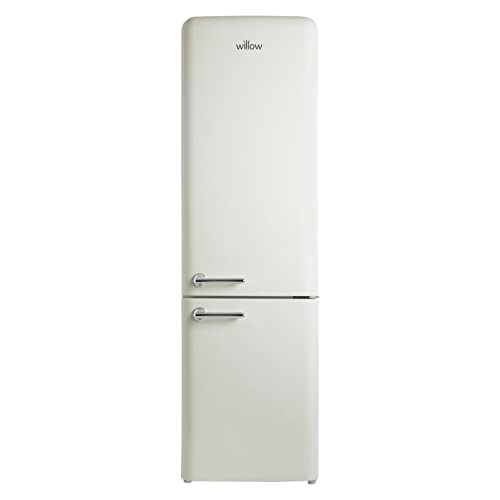Why Fridges And Freezers Is Your Next Big Obsession
Understanding Fridges and Freezers: The Essential Kitchen Appliances
Refrigerators and freezers are two of the most vital appliances in modern kitchens. These devices serve a crucial function in food preservation and waste decrease by ensuring that perishable products remain fresh and safe for usage. This post digs into the numerous kinds of fridges and freezers, their functionalities, and crucial factors to consider for choice and maintenance.
Kinds of Refrigerators
The market provides a range of refrigerator types, each developed to satisfy different consumer needs. Below is a list of the most common kinds of fridges:
Top-Freezer Refrigerators
- Most typical type.
- Freezer compartment is situated above the refrigerator area.
- Typically more budget-friendly and energy-efficient.
Bottom-Freezer Refrigerators
- Freezer is located at the bottom.
- Enables easier access to fresh items at eye level.
- Typically features pull-out drawers for better organization.
Side-by-Side Refrigerators
- Refrigerator and freezer sections are nearby.
- Ideal for narrow kitchen areas and allows easy access to both compartments.
- Typically comes with water and ice dispensers.
French Door Refrigerators
- Combines a bottom freezer with double doors at the top.
- Deals sufficient storage and elegant styles.
- Typically includes functions like temperature-controlled drawers.
Compact Refrigerators
- Smaller size perfect for minimal areas.
- Typically utilized in dormitory rooms, studio apartments, or as secondary fridges.
Table 1: Comparison of Refrigerator Types
| Type | Advantages | Drawbacks | Normal Size |
|---|---|---|---|
| Top-Freezer | Cost effective, energy-efficient | Less hassle-free access to the freezer | 14-30 cu. ft. |
| Bottom-Freezer | Simpler access to fresh food | Freezer can be more difficult to organize | 19-30 cu. ft. |
| Side-by-Side | Easy access, water/ice dispenser | Narrow vs. storage space | 22-30 cu. ft. |
| French Door | Stylish, roomy, arranged | More costly | 20-30+ cu. ft. |
| Compact | Space-saving, portable | Limited storage | 1.7-5.5 cu. ft. |
Types of Freezers
Freezers are a similarly important home appliance for food preservation. They are available in different designs developed to fit different household requirements. Think about the following types:
Upright Freezers
- Operate like a basic refrigerator with vertical storage.
- Simpler to arrange with shelves and compartments.
Chest Freezers
- Large, horizontal style generally using more storage space.
- Maintains temperature levels better throughout power blackouts.
- More energy-efficient than upright designs.
Portable Freezers
- Compact units ideal for outdoor activities or little spaces.
- Frequently utilized for camping trips or as momentary storage.
Table 2: Comparison of Freezer Types
| Type | Benefits | Drawbacks | Typical Size |
|---|---|---|---|
| Upright Freezer | Easier to organize | Less energy-efficient, more floor space | 5-20 cu. ft. |
| Chest Freezer | Holds more items, energy-efficient | Harder to organize | 5-25 cu. ft. |
| Portable Freezer | Compact and versatile | Limited storage capability | 1-10 cu. ft. |
Key Features to Consider
When picking a fridge or freezer, customers need to keep in mind numerous features that can improve performance:
- Energy Efficiency: Look for designs with the ENERGY STAR accreditation to conserve on electricity costs.
- Storage Capacity: Evaluate storage needs based upon household size and consuming routines.
- Temperature level Control: Some home appliances use digital controls for precise temperature level settings.
- Adjustable Shelving: Customizable shelving enables ideal company.
- Water and Ice Dispenser: Offers benefit but can use up valuable space inside.
- Sound Level: Sound scores can influence comfort, particularly in open-concept homes.
Benefits and drawbacks of Having a Fridge and Freezer
While fridges and freezers are important innovations, they likewise have particular advantages and disadvantages:
| Pros | Cons |
|---|---|
| Preserve food life-span and lower waste | Require regular upkeep |
| Permit bulk buying and meal prepping | Can be expensive to purchase and run |
| Deal benefit and fast access to food | Occupy significant kitchen space |
Upkeep Tips
To make sure durability and ideal performance of fridges and freezers, consider the following upkeep tips:
- Regular Cleaning: Clean the exterior and interior periodically to prevent buildup of dirt and bacteria.
- Check Seals: Inspect door seals frequently for leakages to preserve performance.
- Temperature level Settings: Keep the fridge at 34-38 ° F and the freezer at 0 ° F for ideal food preservation.
- Defrost as Needed: Chest freezers should be thawed routinely to preserve effectiveness.
- Clear Air Vents: Ensure that air flow isn't obstructed to improve energy effectiveness.
Frequently asked questions About Fridges and Freezers
Q1: How long can food be stored in a freezer?A: Most foods can be kept in a freezer for a number of months. Meats and poultry typically last 4-12 months, while vegetables can last as much as 8-12 months.

Q2: How often must I clean my Uk Fridge Freezer and freezer?A: It is recommended to clean your fridge and freezer every 3 to 6 months, or as required when spills occur. Q3: Can I put hot food straight in the fridge?A: It is advised to cool hot food to space temperature before putting it in the fridge to prevent
raising the temperature level inside the home appliance. Q4: Why is my fridge running constantly?A: This might be due to a malfunctioning thermostat, stopped up coils, or door seals that aren't working properly. Fridges and freezers are indispensable
properties to modern-day families, offering important services for food storage and conservation.
Comprehending the various types, features, and maintenance requirements can help customers choose the right home appliances for their requirements and maximize their functionality. Accepting energy-efficient models not only supports sustainable practices but likewise contributes to significant cost savings on energy bills, making informed options more essential than ever.





